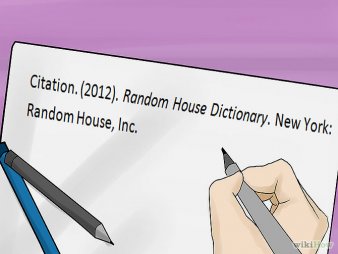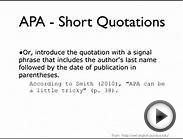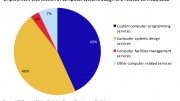
This guide is based on the Publication Manual of the American Psychological Association, 6th ed. It provides selected citation examples for common types of sources. For more detailed information please consult a print copy of the style manual available at the SFU Library and at the SFU Bookstore.
For the best printing results for this guide, use the printer-friendly PDF format
Refer to these SFU APA citation guides for business sources and Canadian government documents.
APA requires that the entire paper be double-spaced, including all the lines in the reference list.
Number all pages consecutively, beginning with the title page, in Arabic numerals (e.g., 4, not IV) in the upper right-hand corner (Rule 8.03, p. 230).
You need to cite and document any sources that you have consulted, even if you presented the ideas from these sources in your own words. You need to cite:
- to identify other people's ideas and information used within your essay.
- to inform the reader of your paper where they should look if they want to find the same sources.
A citation must appear in two places in your essay:
- in the body of your text ("in-text citations").
- in the reference list (at the end of your paper).
To introduce other people's ideas in text, use the following examples:
Richardson argues, refers to, explains, hypothesizes, compares, concludes;
As Littlewood and Sherwin demonstrated, proved... etc.
Spelling: Merriam-Webster's Collegiate Dictionary [print or online] is the standard spelling reference for APA journals and books (Rule 4.12, p. 96).
Capitalize all major words in titles of books and articles within the body of the paper (Rule 4.15, p.101). E.g.
In his book, Greek Political Thought (2006), Balot argues that...
The criticism of the article, "The Politics of Paraliterary Criticism"...
NOTE: In reference lists, however, capitalize only the first word of the title and of the subtitle (after a colon or em dash) and proper nouns.
Source: www.lib.sfu.ca
You might also like:















